
The background of the town of Pontypridd is quite difficult to unravel but it appears that prior to the building of the bridge by William Edwards in 1756 the area was very sparsely populated consisting of just scattered farms and was in fact a rural backwater. It wasn't until some 50 years later that the population started to expand with the establishment of Treforest Tin Works circa 1800 and the canal transportation system that carried the raw materials from the Cynon and Merthyr Valleys. The real population explosion however, didn't occur until the exploitation of the rich coal seams that started to be extracted in the mid 1800's. This steam coal produced more power and less clinker that any other steam coal known at the time and was the only coal used by the Royal Navy and many other steam driven marine/industrial enterprises.
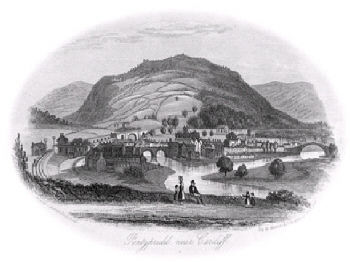
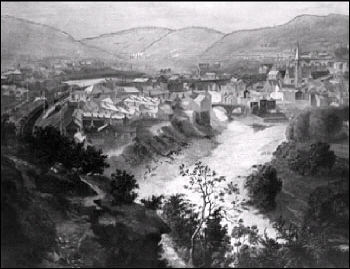
Left: an illustration of Pontypridd circa 1900
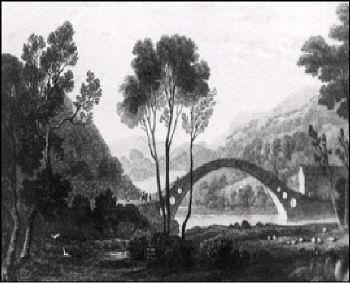
The name implies that there was previously a bridge crossing the river Taff in the area and in John Leland's Itinerary (1536-42) listing bridges over the river Taff, we find evidence for this. He refers to a wooden bridge at Pont Rhehesk. In those days they tended to spell as they heard, so we can assume the site was near present day Craig-yr-Hesg, a short distance upstream from Edwards Bridge.
Reasons for the siting of that bridge may well have been for the use by pilgrims travelling to Saint Mary's Monastery at Penrhys.
When Henry VIII closed the monastery in 1538 the local population would have had no need for a bridge, which would have fallen into decay without the pilgrims. It would be more than 200 years before the need for a crossing would encourage the building of another bridge.
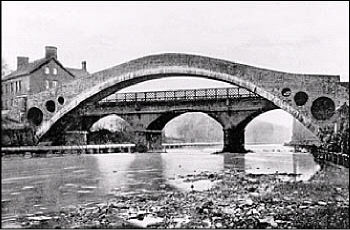
The family moved to Bryntail, which was sited just south of Eglwysilan Church overlooking the site of the present day Treforest Trading Estate.
As a youngster William worked diligently on the farm and soon showed an interest in dry stonewalling and building work in general. When builders visited the area he would learn from them the techniques that were to stand him in good stead in later life. He started building himself and one of his many projects was a mill at Craig y Fedw just east of Abertridwr. During the period when he lived in Cardiff he also built a furnace at Cardiff Castle .
In 1746 William Edwards was commissioned to build a bridge over the river Taff at Pontypridd for the sum of £500 on condition that the bridge stood for 7 years.
An illustration of William Edwards Bridge shows the rural nature of the surrounding area shortly after the construction of the bridge.
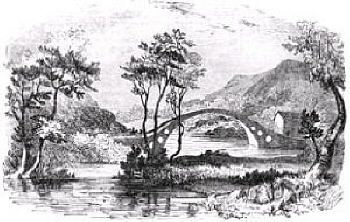
The
first attempt was a three arch structure, which stood for 26 months before being
washed away by debris carried by the river Taff in flood. The second attempt was
to span the Taff without any supporting pillars midstream. Staging collapse caused
the failure of this attempt when the structure that was used to support the heavy
bridge during the building phase gave way.
The next attempt was also to end
in failure when the centre section collapsed because it could not support the
weight of the large side haunches. This gave Edwards the idea for his fourth attempt.
He would modify the design and create large tunnels through the haunches on each
side to reduce the weight transfer to the centre section. These tunnels measuring
9 feet for the bottom, 6 feet for the middle and 3 feet for the top were to prove
successful and the bridge was finally completed in 1756.
The Old and the New. This photograph clearly shows the both bridges in the early 1900's, The tunnels through the haunches can be seen which allowed William Edwards to complete the structure of his bridge